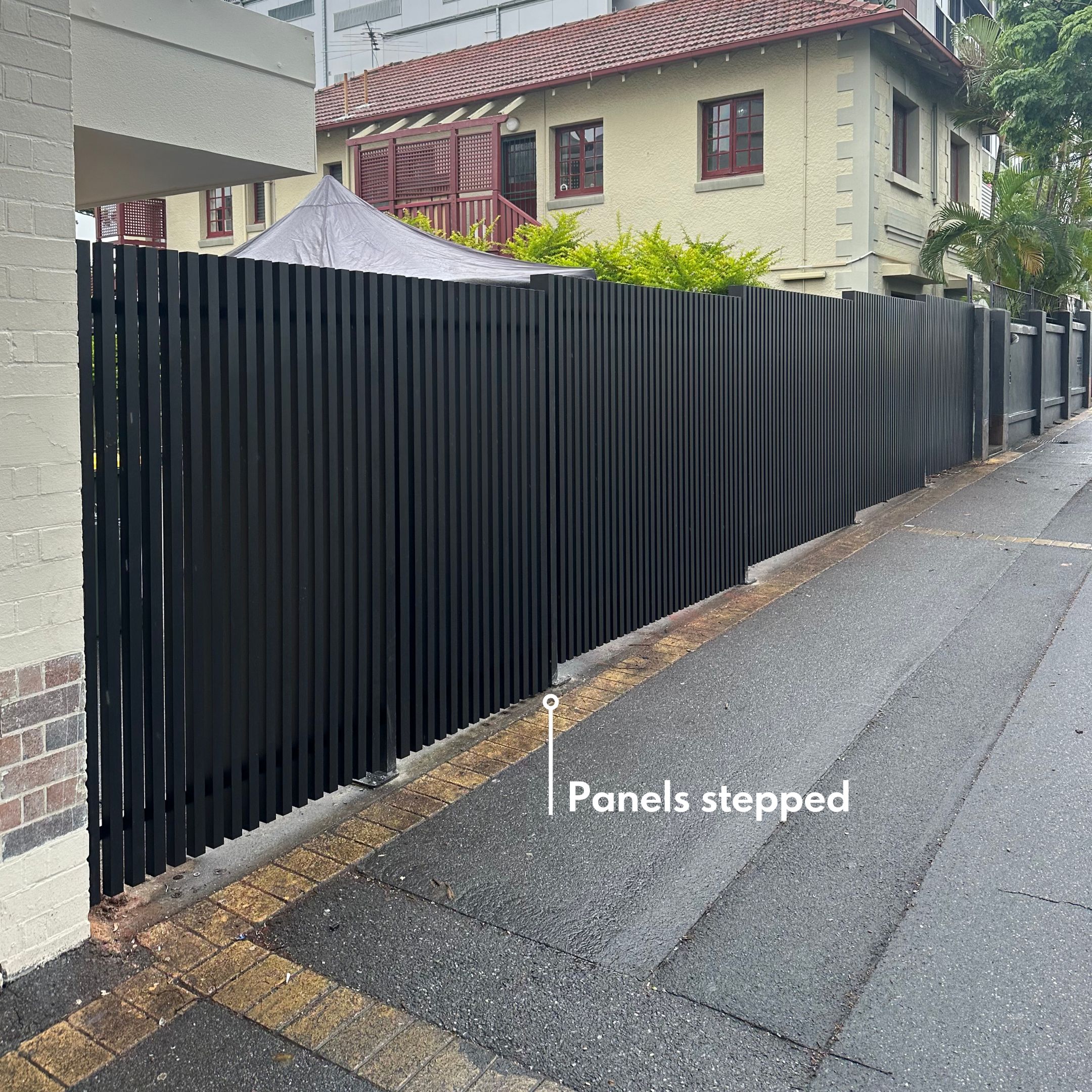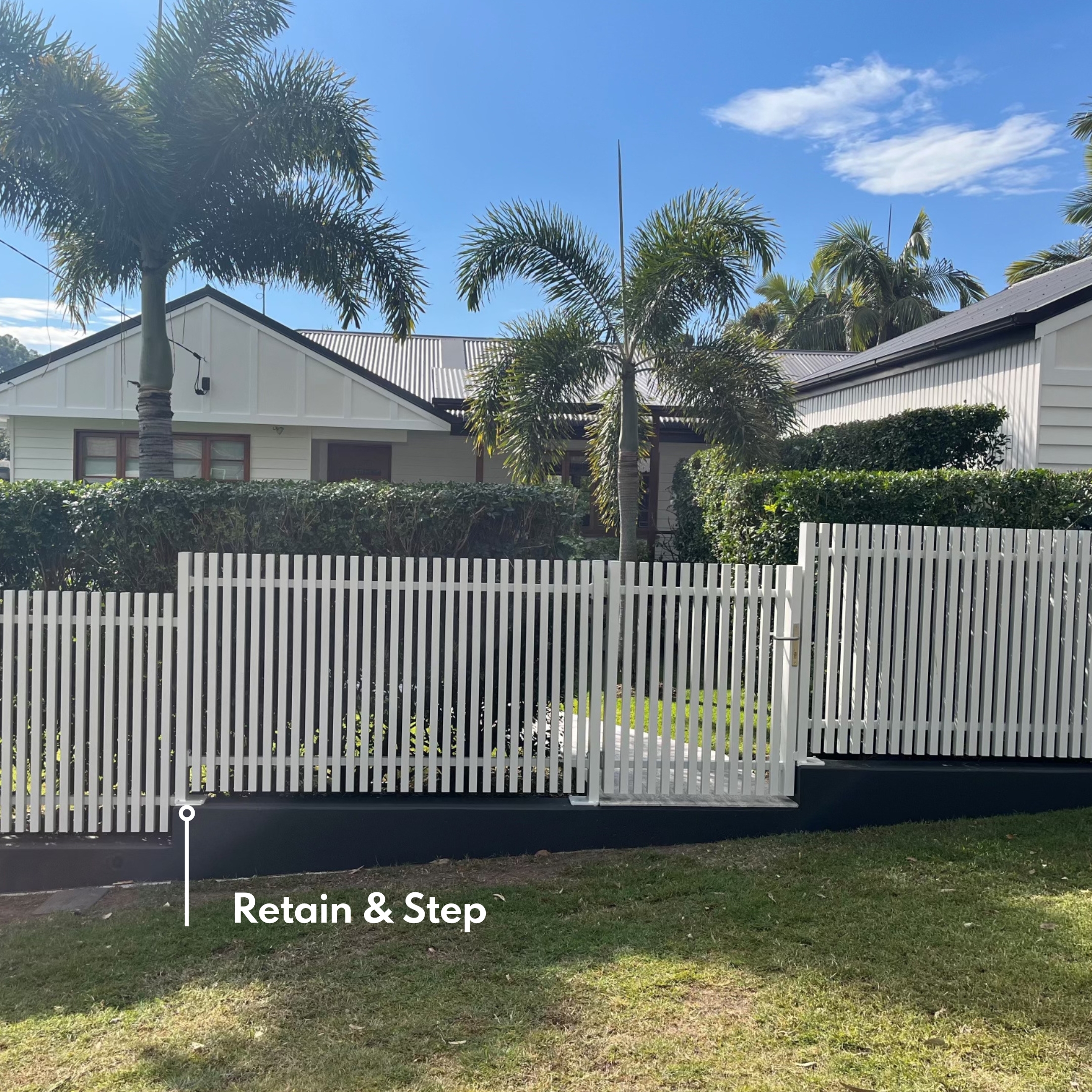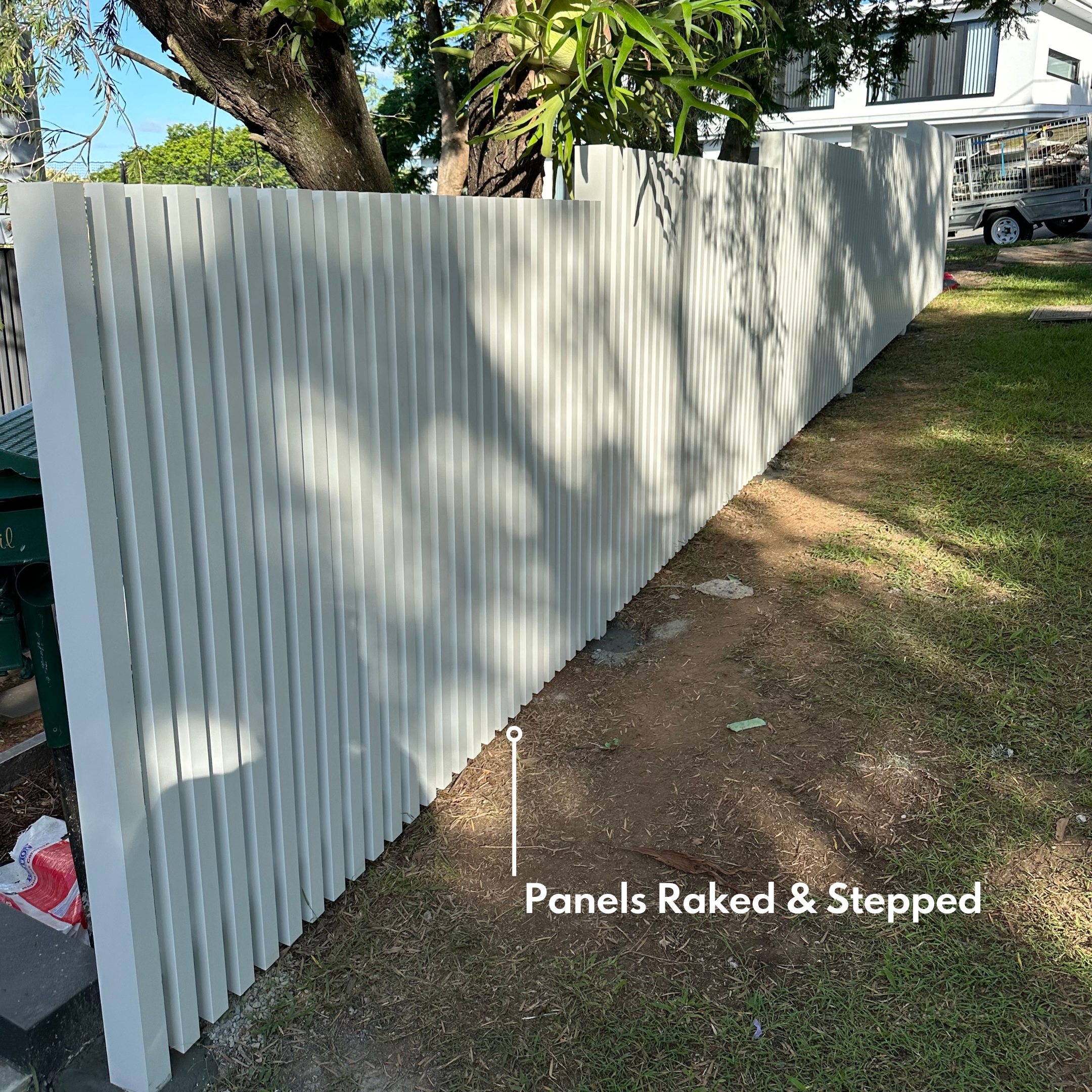Sloping Blocks
Installing a fence on a sloping block can have it's challenges, but with the right approach you'll make easy work installing a Future Fence on even the most challenging of blocks.
Here, we'll explore three common approaches:
Step
Retain & Step
Rake & Step
Option 1: Step
Overview
This method involves installing the fence panels in a step-like fashion, adjusting the height at each post to match the slope. This will leave gaps under the fence panels at the lower points of the slope.
Advantages
Simple and fast installation process.
Maintains a consistent panel appearance.
Disadvantages:
Gaps under the fence may not be ideal for privacy or security.
May require additional measures to prevent small animals from escaping.
Option 2: Retaining & Step
Overview
In this method, sleepers or a retaining wall are used to create level terraces. The fence panels are then mounted on top, stepping up with each change in the height of the retaining wall.
Advantages:
Provides a stable base for the fence.
Eliminates gaps under the fence, enhancing security and providing a more refined finish.
Disadvantages:
More labor-intensive and expensive due to the use of sleepers or retaining walls.
Option 3: Rake & Step
Overview
Raking involves cutting along the bottom of the fence panels to follow the slope of the land (up to the height of the bottom rail). The height of the fence steps up at each post, matching the slope’s gradient.
Advantages
Provides a more seamless look that follows the natural contour of the land.
No gaps under the fence, ensuring better privacy and security.
Disadvantages
Requires precise cutting and measurement.
Can be more complex to install compared to stepping.
Need professional help?
Just reach out and we'll put you in contact with an installer in your area.



